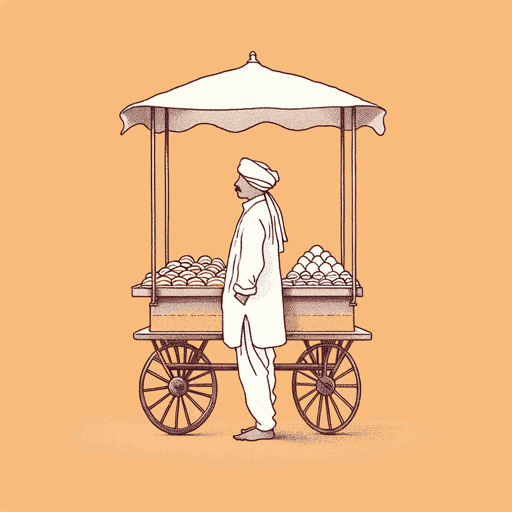53 pages • 1 hour read
R. K. NarayanThe Ramayana: A Shortened Modern Prose Version of the Indian Epic
Nonfiction | Book | Adult | Published in 1972A modern alternative to SparkNotes and CliffsNotes, SuperSummary offers high-quality Study Guides with detailed chapter summaries and analysis of major themes, characters, and more.
Summary and Study Guide
Overview
R. K. Narayan’s The Ramayana: A Shortened Modern Prose Version of the Indian Epic (Suggested by the Tamil Version of Kamban) was first published in 1972 by Viking Press. The epic story of Rama’s journey contains the teachings of ancient Hindu sages, and these teachings continue to have a major influence on Indian culture.
The story of Rama stems from the tradition of bardic literature that was passed down orally through the generations across different regions of the world, including what it is now India and Southeast Asia. The original epic may date back to 1500 BCE, but the actual date is impossible to determine. The poet Valmiki wrote the original narrative poem of the epic in Sanskrit, possibly as early as 1 AD, and Narayan’s shortened verse translation of the epic poem follows Kamban’s Tamil version of Valmiki’s epic, called Kamba Ramayana.
Over the centuries, the Indian epic of Rama’s journey, which is sometimes known as the Romance of Rama, has been adapted into hundreds of versions in many old and contemporary languages. The Ramayana has also been adapted into operas, dance performances, shadow puppet shows, and Bollywood films, as well as a popular Indian television series in the 1980s.
Plot Summary
Set centuries ago in the beautiful lands of India, the Ramayana is the Indian epic of Rama, the prince of Kosala, and his physical and spiritual journeys. At the start of the epic, Rama’s father, King Dasaratha of Kosala, laments that he has no son to succeed him on the throne. His sage Visishtha advises him to carry out sacred rituals, and Dasaratha’s three wives each bear him sons. Rama is the eldest of these sons, and together with his brothers Lakshmana and Sathrugna, who are twins, and Bharatha, Rama studies and seeks moral purity.
When Rama is still young, the sage Viswamithra seeks his assistance fighting demons, and Dasaratha reluctantly allows his son to accompany the sage on this honorable journey. Lakshmana goes with Rama, and together, the brothers display impressive acts of courage and warrior skill. During this journey, Rama meets and marries Sita, who, like Rama, is the incarnation of a divine being. Rama is Vishnu in human form, and Sita is Vishnu’s consort, the goddess Lakshmi, but the two humans are unaware of their true identities. Their appearance and their behaviors, however, suggest that they are supernatural beings to others who observe them.
Sometime after Rama’s initiation with the sage Viswamithra, his father decides that it is time for him to step down from the throne and to crown Rama king in his stead. He tells Rama the news, and Rama accepts this duty, but Dasaratha’s third wife, Kaikeyi, interferes with Dasaratha’s plan, desiring the throne for her own son, Bharatha. Kaikeyi sends Rama into 14 years of exile, but her son, Bharatha, rejects the crown, placing a pair of Rama’s sandals on the throne as a symbol of the true ruler of Kosala and acting only as a regent from afar.
While in exile in the forest, Rama, accompanied by Sita and Lakshmana, encounters Soorpanaka, a demon who has taken human form to seduce Rama. He refuses her, but she persists in her desire for Rama, believing eventually that Sita stands in her way. Lakshmana catches Soorpanaka following Sita in the forest, and he punishes Soorpanaka by mutilating her. In shame and fury, she retreats to her brother’s lair. Soorpanaka’s brother is Ravana, the powerful demon overlord with 10 heads. Soorpanaka persuades Ravana to fall in love with Sita so that he will kidnap her, freeing Rama to marry Soorpanaka. Soorpanaka’s scheme works, and Ravana kidnaps Sita, but her plans unintentionally set her brother and his followers on a journey to their deaths.
With the assistance of Sugreeva, the monkey king, and Hanuman, the shape-shifting monkey son of the god of the wind, Rama gathers a monkey army and engages Ravana in battle to recover Sita from their island nation of Lanka. Rama, armed with his bow and arrow and other weapons, and his band travel to Lanka to fight with Ravana and rescue Sita. They are successful, and as soon as the forces of good defeat the forces of evil, Rama and Sita are reunited. After Rama’s 14-year exile finishes, they return to Ayodhya, the capital of Kosala, where Bharatha has kept the throne safe for Rama’s return, and Hanuman stays as Rama’s most loyal advisor and devotee.
Related Titles
By R. K. Narayan






